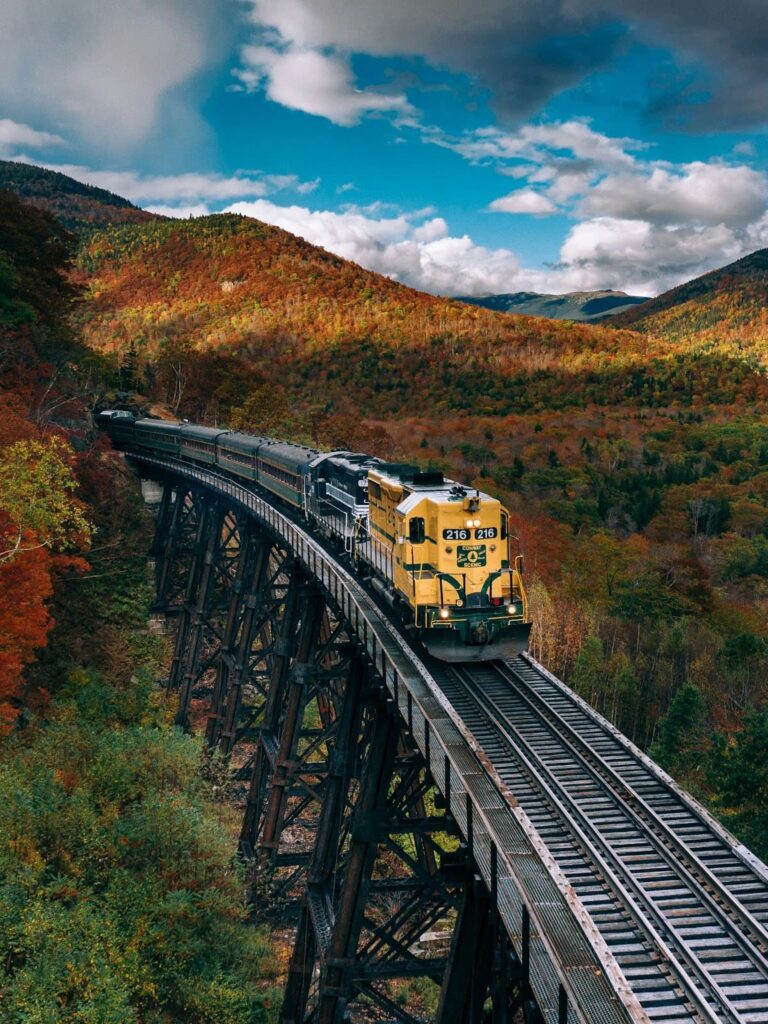When people think of transportation in the United States, images of interstate highways, airports, and road trips often come to mind. But behind the scenes of this car-centric culture exists a passenger rail network that’s historic, underutilized, and filled with untapped potential. While not as expansive or integrated as in Europe or Asia, the U.S. passenger rail system is a unique and evolving infrastructure that connects key cities and regions across the country.
This article takes a closer look at the current state of the U.S. passenger rail network, its history, challenges, and the growing momentum behind a rail renaissance.
A Glimpse into History: How the U.S. Rail System Evolved
In the 19th and early 20th centuries, passenger trains were the backbone of American travel. Railroads stitched together distant towns and cities, enabling economic expansion, migration, and tourism. From the Transcontinental Railroad to the iconic streamliners of the 1940s, the U.S. once boasted one of the most advanced passenger rail systems in the world.
But with the rise of the automobile, highway expansion, and commercial aviation after World War II, passenger rail entered a long period of decline. Private rail companies struggled to compete and began cutting passenger routes, eventually leading to the creation of Amtrak in 1971—a government-backed company intended to preserve and operate intercity passenger rail.
Amtrak: The Backbone of U.S. Passenger Rail
Today, Amtrak is the primary provider of intercity rail service in the United States. It operates over 21,000 miles of routes and connects more than 500 destinations across 46 states.
🔹 Key Amtrak Routes:
- Northeast Corridor (NEC): The busiest and most profitable corridor, linking Boston, New York City, Philadelphia, Baltimore, and Washington, D.C. with frequent, high-speed Acela and regional trains.
- California Zephyr: A scenic route between Chicago and San Francisco, offering breathtaking views of the Rocky Mountains and Sierra Nevada.
- Empire Builder: Connecting Chicago to the Pacific Northwest, traveling through the northern plains and Glacier National Park.
- Texas Eagle: Stretching from Chicago to San Antonio, and continuing to Los Angeles via the Sunset Limited.
🔹 Types of Services:
- Acela Express: Amtrak’s only high-speed service, reaching speeds up to 150 mph on the NEC.
- Regional & Long-Distance Trains: Slower, scenic, and often serving rural areas with limited alternatives.
Despite its wide reach, Amtrak’s service can be irregular, with many cities receiving only one or two trains per day, and others left without service at all.
Challenges Facing U.S. Passenger Rail
The American passenger rail network operates under very different conditions compared to countries with strong rail systems like Japan, Germany, or France.
❌ Key Challenges:
- Shared Tracks with Freight: Most Amtrak routes run on tracks owned by private freight railroads, which leads to delays and limited scheduling control.
- Aging Infrastructure: Much of the rail infrastructure, especially on long-distance routes, is decades old and in need of repair or replacement.
- Low Funding & Investment: Passenger rail often takes a back seat to highway and air travel when it comes to federal and state funding.
- Lack of Speed & Frequency: Many routes are slow and infrequent, making trains less competitive with flying or driving.

Bright Spots: Regional Rail Systems and Local Investment
While Amtrak serves as the national provider, many regions have developed their own commuter and regional rail networks to meet local demand.
🏙️ Notable Regional Rail Networks:
- Metro-North & Long Island Rail Road (New York): Massive commuter systems connecting the suburbs to New York City.
- Metra (Chicago): One of the largest commuter networks in the U.S., linking Chicagoland with downtown.
- Caltrain (San Francisco Bay Area): Provides regular service along the Peninsula between San Francisco and San Jose.
- Sounder Train (Seattle): Connects Tacoma, Everett, and Seattle with daily commuter routes.
These regional systems show that where investment, planning, and demand intersect, rail can flourish—even in a car-centric country.
The Future of Passenger Rail in the U.S.
Recent years have seen renewed interest in expanding and improving passenger rail, spurred by concerns over climate change, urban congestion, and infrastructure modernization.
🚄 High-Speed Rail Projects in Progress:
- California High-Speed Rail: Aiming to connect San Francisco to Los Angeles via the Central Valley at speeds up to 220 mph. While delayed and over budget, it represents a major leap forward for U.S. rail ambitions.
- Brightline (Florida): A private rail line connecting Miami to Orlando, offering modern trains and higher speeds.
- Texas Central Railway: A proposed bullet train using Japanese Shinkansen technology to link Dallas and Houston in under 90 minutes.
🏗️ Federal Support & Funding:
The Bipartisan Infrastructure Law (2021) allocated billions of dollars for rail improvements, including:
- Modernization of existing Amtrak routes
- Expansion of service to underserved cities
- Investments in safety and speed upgrades
These developments suggest that the U.S. is slowly but steadily moving toward a rail revival, one that could reshape how Americans travel between cities.
The U.S. passenger rail network is a system of contrasts—rich in history, limited in scope, and full of possibility. While far from perfect, it remains a vital link for many communities and offers a more sustainable, scenic, and relaxed alternative to air and road travel.
With continued investment, modern infrastructure, and a shift in public attitudes, passenger rail could once again become a mainstream and competitive mode of transportation in America.
The tracks are already there. The future depends on how we choose to use them.